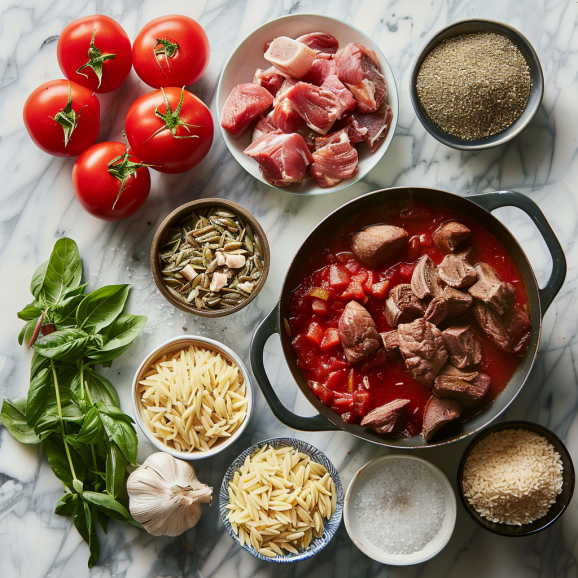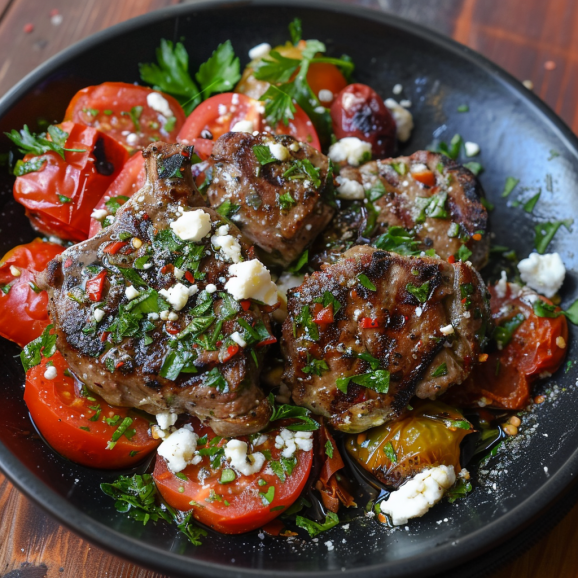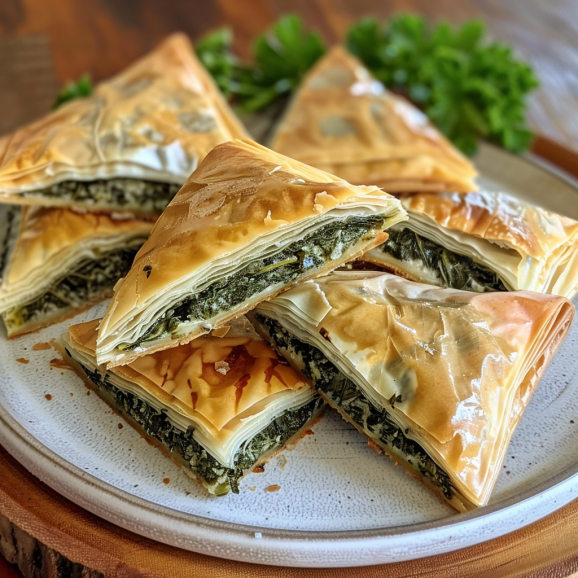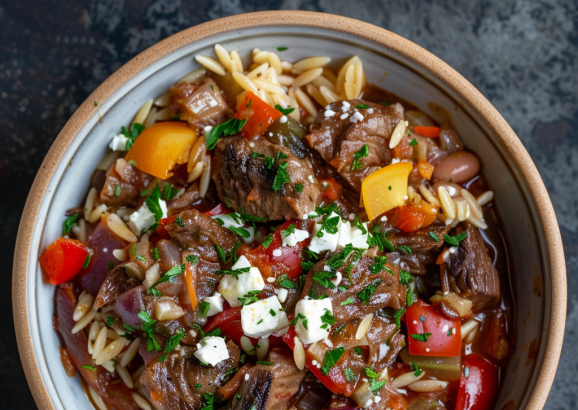
Greek cuisine is a treasure trove of flavors, with dishes that have been passed down through generations, each telling a story of the country’s rich cultural heritage. One such dish is Youvetsi, a traditional Greek casserole that combines tender meat, orzo pasta, and a rich tomato-based sauce. In this blog post, we will explore the delicious world of Greek Youvetsi, providing a detailed recipe, answering frequently asked questions, and embedding useful internal and external links for an enriching culinary journey.
What is Greek Youvetsi?
Greek Youvetsi is a comforting and hearty dish that features tender pieces of meat (usually beef or lamb), orzo pasta, and a rich tomato sauce. This dish is traditionally baked in the oven, allowing the flavors to meld together beautifully. The result is a savory, satisfying meal that is perfect for family gatherings and special occasions.
The Cultural Significance of Youvetsi
Youvetsi holds a special place in Greek cuisine, often prepared for Sunday family dinners and festive occasions. Its origins can be traced back to rural Greece, where it was a practical way to use available ingredients and create a nourishing meal. The dish symbolizes the Greek values of family, hospitality, and sharing good food.
Ingredients for Greek Youvetsi
To prepare a traditional Greek Youvetsi, you will need the following ingredients:
- 1 lb (450g) beef or lamb, cut into chunks
- 2 cups orzo pasta
- 1 large onion, finely chopped
- 2 cloves garlic, minced
- 1 cup crushed tomatoes
- 1 cup beef or chicken broth
- 1/4 cup red wine (optional)
- 2 tablespoons olive oil
- 1 teaspoon dried oregano
- 1 teaspoon dried thyme
- Salt and pepper to taste
- Grated kefalotyri or Parmesan cheese for serving
- Fresh parsley for garnish
Instructions for Making Greek Youvetsi
- Preheat the Oven: Preheat your oven to 350°F (175°C).
- Brown the Meat: In a large ovenproof pot or Dutch oven, heat the olive oil over medium-high heat. Add the meat and brown it on all sides. Remove the meat from the pot and set it aside.
- Sauté the Vegetables: In the same pot, add the chopped onion and garlic. Sauté until the onion is translucent and fragrant.
- Deglaze the Pot: If using, add the red wine to deglaze the pot, scraping up any browned bits from the bottom.
- Add the Tomatoes and Broth: Stir in the crushed tomatoes and broth. Bring the mixture to a simmer.
- Combine the Ingredients: Return the browned meat to the pot and add the orzo pasta. Stir to combine.
- Season and Bake: Add the dried oregano, thyme, salt, and pepper. Cover the pot and transfer it to the preheated oven. Bake for 30-35 minutes, or until the orzo is tender and the meat is cooked through.
- Serve: Garnish with grated cheese and fresh parsley. Serve hot and enjoy the rich flavors of this traditional Greek dish.
Tips for the Perfect Greek Youvetsi
Choose the Right Meat
Beef and lamb are traditional choices for Youvetsi, but you can also use chicken or pork. Select a cut that becomes tender when slow-cooked, such as beef chuck or lamb shoulder.
Enhance the Flavor
Using homemade beef or chicken broth can significantly enhance the flavor of your Youvetsi. Additionally, fresh herbs like rosemary and bay leaves can add depth to the dish.
Adjust the Consistency
If you prefer a saucier Youvetsi, add a bit more broth during the baking process. Conversely, if you like a thicker consistency, reduce the amount of liquid slightly.






Frequently Asked Questions (FAQ) about Greek Youvetsi
What is the origin of Youvetsi?
Youvetsi is a traditional Greek dish with roots in rural Greece. It has been passed down through generations and is enjoyed during family gatherings and special occasions.
Can I use different types of pasta for Youvetsi?
While orzo is the traditional pasta used in Youvetsi, you can also use other small pasta shapes such as kritharaki or small elbow macaroni.
Can I make a vegetarian version of Youvetsi?
Yes, you can make a vegetarian version by substituting the meat with vegetables such as mushrooms, zucchini, and bell peppers. Use vegetable broth instead of beef or chicken broth.
How can I store and reheat leftovers?
Store any leftover Youvetsi in an airtight container in the refrigerator for up to 3 days. Reheat in the oven or on the stovetop, adding a little broth or water if needed to maintain the consistency.
What can I serve with Youvetsi?
Youvetsi pairs well with a Greek salad, crusty bread, and a glass of red wine. You can also serve it with a side of steamed vegetables or a light cucumber salad.
Internal Links for Further Reading
- Greek Chicken Marinade
- Greek Cooking Equipment
- Greek Bread Making of Horiatiko Psomi
- Greek Inspired Green Bean Casserole
- Greek Meze Delicacies Unveiled
- Greek Egg Dishes Protein Packed
- Exploring Traditional Greek Meze Appetizers
- Grilled Octopus Cultural Significance Mediterranean
- Semolina Pudding
- Greek Coffee Pairing a Sweet
- Delicious Greek Hummus Recipe
Conclusion
Greek Youvetsi is a quintessential dish that embodies the heart and soul of Greek cuisine. Its rich, savory flavors and comforting nature make it a perfect meal for any occasion. By following the recipe and tips provided, you can bring a taste of Greece into your home and enjoy the timeless tradition of sharing good food with loved ones. Whether you are preparing Youvetsi for a family dinner or a festive celebration, this dish is sure to impress and satisfy.
Embrace the rich culinary heritage of Greece and savor the delightful flavors of Youvetsi. Happy cooking!
Under the masterful guidance of culinary virtuoso Anna-Maria Barouh, each stir, chop, and simmer transcends mere cooking, evolving into a vibrant learning journey that bridges the age-old culinary wisdom with the vivacious enthusiasm of the new.


















